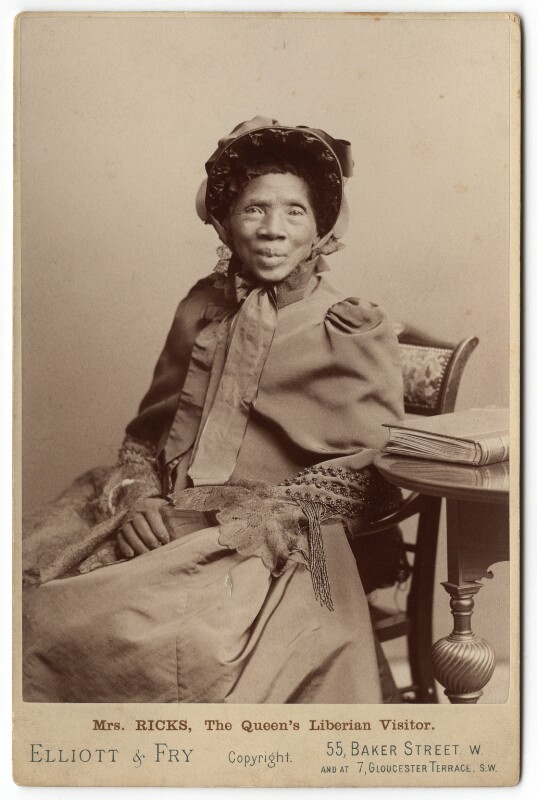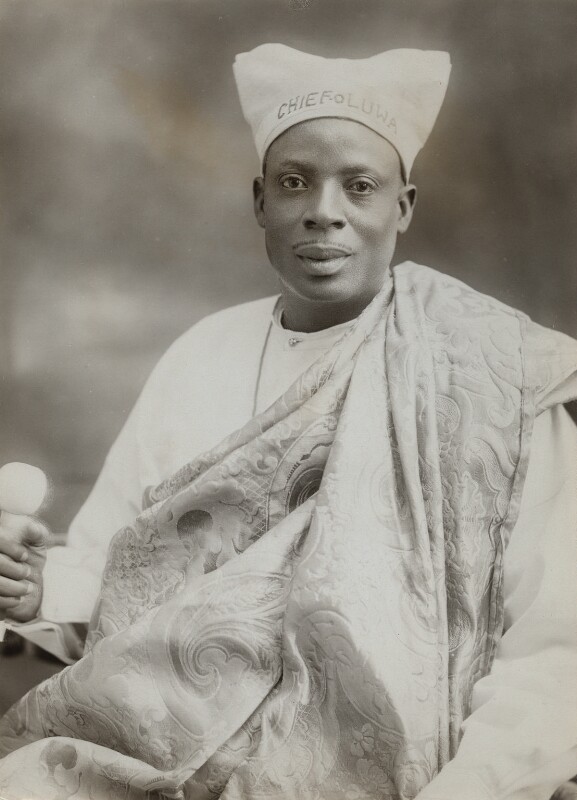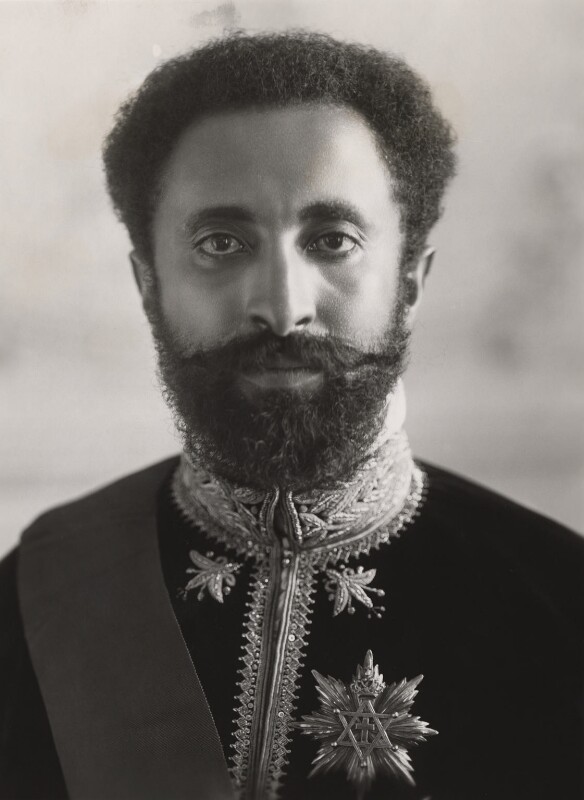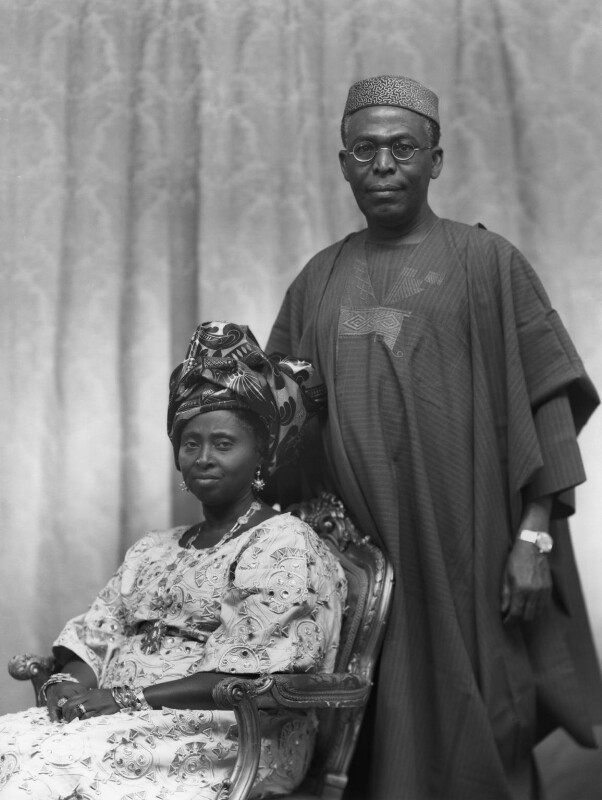The National Gallery in London: Where to Start?
Having lived in London for the past three years as an art lover, I have had more than my fair share of questions about where to “start” at the...
Sophie Pell 3 February 2025
The National Portrait Gallery in London closed its doors on June 29th, 2020. The Inspiring People gallery redevelopment works will take three years. The gallery holds the most extensive collection of portraits in the world. During this long break, you can still explore the gallery’s extensive online catalog. Let’s visit Africa via the National Portrait Gallery, and learn more about the struggle against colonialism.
Each gallery’s collection is formed by the times when the core of it was acquired or donated. It is later shaped by subsequent acquisitions. And the collection of the National Portrait Gallery is no different. A bulk of it comes from the time of the British Empire and is a testament to its colonial past. It certainly is changing with more recent acquisitions, but the historical approach is evident in the overall composition of the collection. Nowhere is this more visible than in the portraits associated with Africa. The white faces of colonizers, politicians, soldiers, journalists, and researchers abound. Below is a selection of some of the BAME sitters you can meet in the collection. We are focusing on their struggles during the colonial period and shortly after.

Ayuba Suleiman Diallo was an educated man from a family of Muslim clerics in West Africa. In 1731 he was taken into slavery and sent to work on a plantation in America. By his own enterprise, and assisted by a series of spectacular strokes of fortune, Diallo arrived in London in 1733.
Recognized as a deeply pious and educated man, in England Diallo mixed with high and intellectual society. He was even was introduced at Court. Most interestingly he was bought out of slavery by public subscription organized by his supporters. He was one of the few victims of the transatlantic slave trade who, as a freed slave, was able to return home to his family in Africa.

William Ansah Sessarakoo was sent on a grand tour of Europe by his powerful father. He was betrayed by the Captain of the ship, and was instead sold into slavery in Barbados. When his father, a wealthy gold and slave trader, learned of this betrayal, he refused to continue trading with any English merchants. The Royal African Company intervened. They promised to find Sessarakoo, release him from slavery, and arrange safe passage home for him via London. All that in exchange for trade to continue.
In London, a journal published an article entitled A Young African Prince, Sold for a Slave. It romanticized Sessarakoo’s heritage and gave him celebrity status. Sessarakoo was amongst a handful of black foreign visitors to London in the 18th century who were welcomed into London drawing rooms because of the intriguing stories they bought with them
The engraving above is based on two earlier oil paintings, probably commissioned by the sitters’ English supporters. Diallo sat for William Hoare of Bath in 1733, and Sessarakoo for Gabriel Mathias in 1749. Diallo requested that he be painted in his own clothes. He is shown in a loose robe and turban with a small Quran hanging around his neck. Sessarakoo is dressed as a wealthy European gentleman in a brocaded jacket.

Martha Ricks was born into slavery in eastern Tennessee. She was bought out of it by her father, also a freed slave. In 1830 she and her family emigrated to Liberia as part of the American Colonization Society’s work. It supported the migration of free African Americans to the continent of Africa. Ricks earned a living as a crop grower and farmed turkeys but she also harbored a lifelong ambition to meet Queen Victoria.
Through a series of chance encounters, she traveled to London. On 11 July 1892, aged 76, she arrived in Liverpool aboard the Calabar from Monrovia. She carried with her a hand appliqued quilt that she intended to present to the Queen as a gift. The quilt, made from silk and cotton, took her 25 years to complete. Its striking design featured the Liberian Coffee Tree with over 300 green leaves, as well as coffee berries in red.
Word spread of her arrival: the British press took an interest in the story of the lady who traveled 3,5000 miles to meet the Queen. The London Standard printed an interview with her. Five days after her arrival she was granted a royal audience with Queen Victoria at Windsor Castle. Her visit made her popular. She was presented with numerous gifts and received an honorable send-off at the dockside by a substantial crowd of well-wishers.

Amodu Tijani was an Idejo Chief who controlled a series of villages and towns in the Lagos area. He held strong nationalist views, arguing that the British colonial government had no authority to interfere with the Oba’s (ruler of Lagos) rule.
In 1920, Oluwa and Nigerian nationalist Herbert Macaulay visited the Privy Council in London. They defended the Oba’s right of ownership to land appropriated by the British Government. The Council ruled in their favor. This case proved to be a landmark in Nigerian history as it recognized the Chiefs as absolute owners of the land. Songs and poems were later composed in Oluwa’s honor.

Haile Selassie’s official title is in itself impressive: “By the Conquering Lion of the Tribe of Judah, His Imperial Majesty Haile Selassie I, King of Kings, Lord of Lords, Elect of God.”
Selassie claimed direct descent from the Queen of Sheba and King Solomon of ancient Israel through his paternal grandmother’s lineage. He was an influential figure in history who brought Ethiopia into the League of Nations and the United Nations. In 1947 he sent a charitable, or some may say a touch ironic, gesture of £1,000 through the Ethiopian embassy to the British government after a request for aid due to heavy flooding in Britain. Although an ally of the West, he pursued a firm policy of decolonization in Africa from European colonial rule.
Selassie became revered by the Jamaican Rastafarian movement who considered him to be the returned Messiah as predicted in the Bible. Bob Marley’s song Iron Lion Zion is a reference to the Lion of Judah on the Royal Ethiopian flag which came to represent Selassie. “The promised land” in the song refers to Ethiopia.
In 1973, he was deposed following the famine in Ethiopia. The unraveling of his empire is described in a riveting way by Ryszard Kapuściński in The Emperor. Opinions on Selassie’s rule are very divided. Some see him as a hero and liberator; others as a ruler who significantly limited the powers of parliament, to effectively rule without government other than himself. One may say that time will tell. But then the history is always written by the winners- just the same way as art collections are assembled.

Born in Nigeria, Awolowo’s family was part of the small Ikenne community. As a girl, she attended the Methodist Girls High School in Lagos. Aged 22, she married Obafemi Awolowo an aspiring politician. He affectionately and famously referred to his wife as his “jewel of inestimable value.” She campaigned with her husband, touring the country. When he was jailed she continued to represent him by standing up for elections in his place.
As a businesswoman, she became the first distributor for the Nigerian Tobacco Company in 1957. She was also the first to import lace materials and other textiles into Nigeria. In addition to a variety of other titles, she held the chieftaincy of the Yeye Oodua of Yorubaland.
On 19 September 2015, she died at the age of 99, just over 2 months short of her 100th birthday. She was buried on November 25th, her 100th birthday, in a white damask cloth she bought and kept for that purpose for the previous 36 years. She joined her husband in the gold casket in the family mausoleum.
If you visit the National Portrait Gallery’s collection you will notice that the racial balance starts changing when you look at the portraits from the second half of the 20th century to the present. While the narrative is still significantly imbalanced, it is visibly shifting, showing a conscious effort is being made to address the issue. I am really curious how it will present in 50 years from now.
I know art will not solve all problems, but we cannot underappreciate its meaning in defining the culture and environment we operate in, and its role as a tool in the education of future generations. So at least there are some initial green shoots, hopefully, it is all going in the right direction, even if it is way too slow and very, very late.
DailyArt Magazine needs your support. Every contribution, however big or small, is very valuable for our future. Thanks to it, we will be able to sustain and grow the Magazine. Thank you for your help!